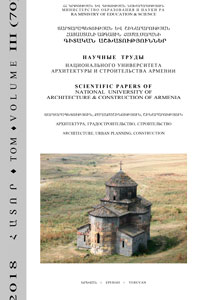THE EVOLUTION OF ARCHITECTURE AND URBAN PATTERNS IN THE CITY OF DAMASCUS
ARCHITECTURE
Аннотация
The urban pattern is a mirror reflecting the civilized level of society in general and the interplay of local and non-local architectural elements with the architectural techniques used. The city of Damascus has ancient architecture styles with distinctive architectural characteristics that can be used in the modern architecture to achieve artistic, expressive and environmental sustainability that suits the spatial characteristics of the city of Damascus and harmonize with the intellectual, religious and social visions of the inhabitants. Damascus has been rich for thousands of years, and has not been interrupted or exposed to urban and demographic emptiness, despite the invasions, wars and disturbances. Every population wave that controlled Damascus tried to impose its culture and distinctive urban pattern, but some architectural elements have remained connected to the environment and to the unified culture throughout history.

